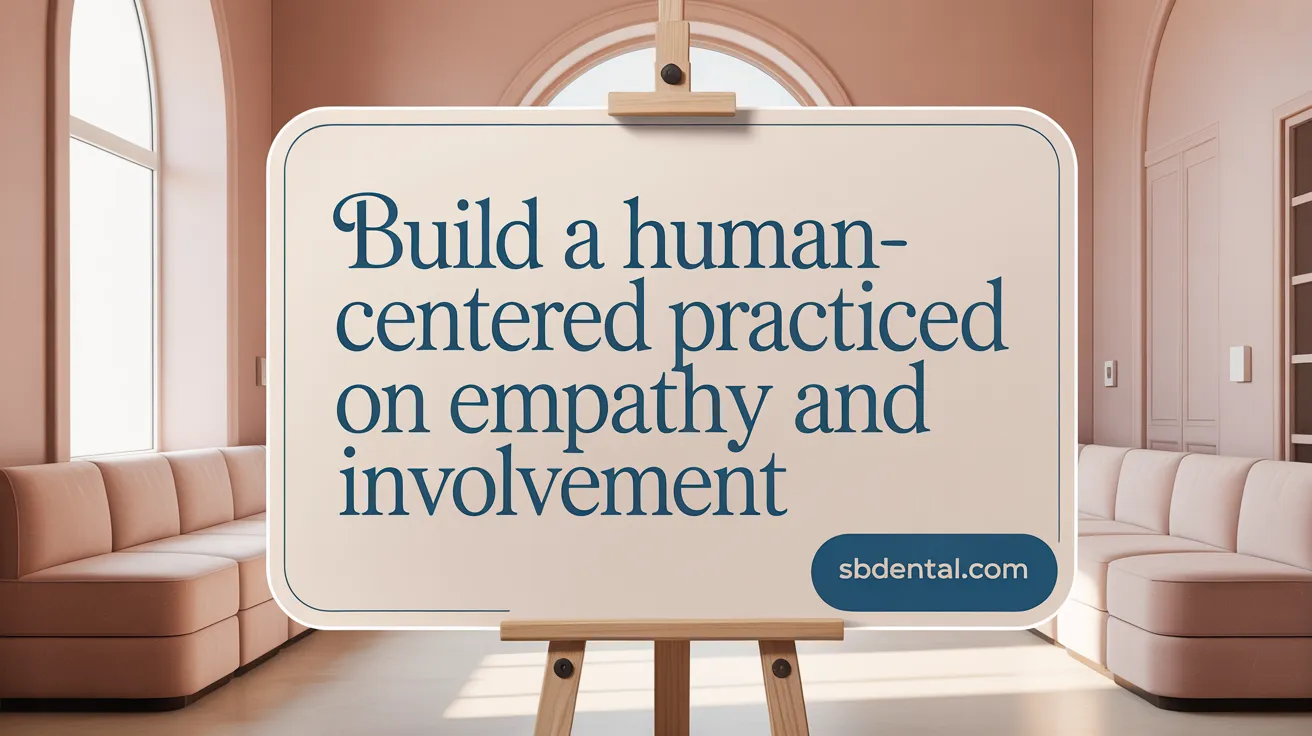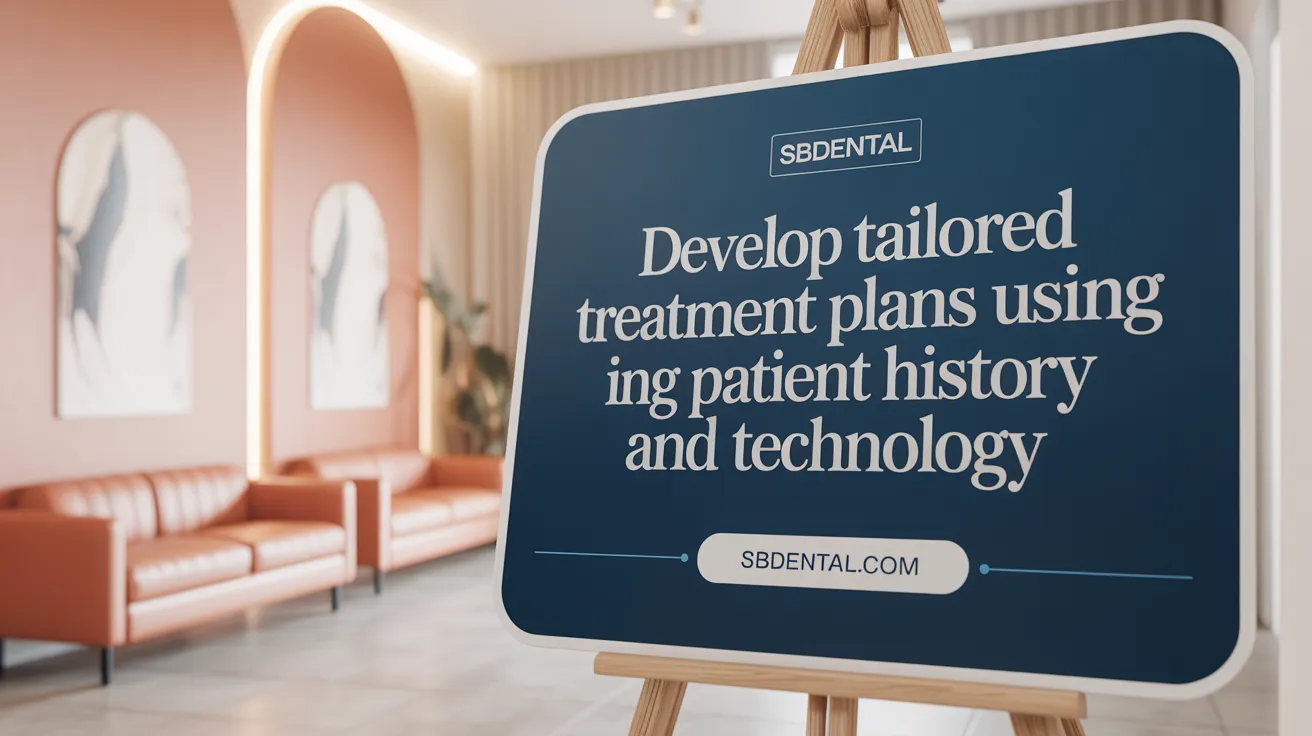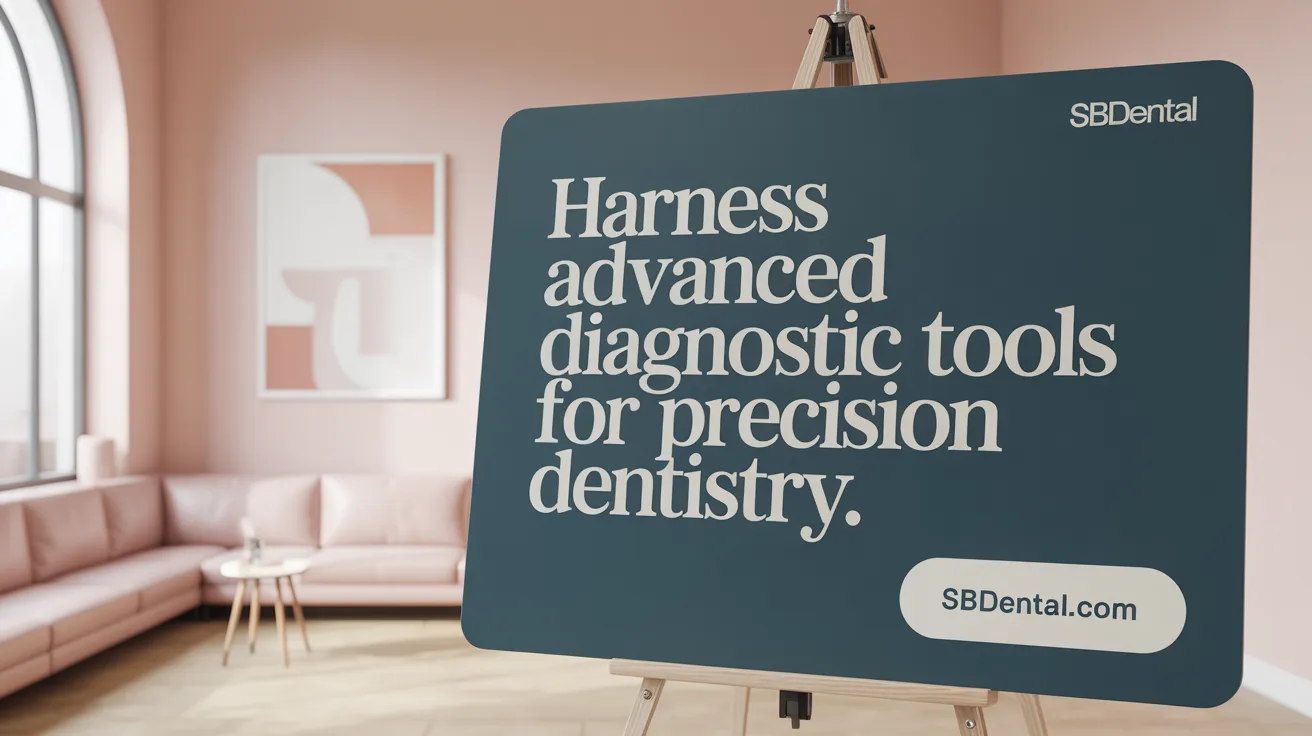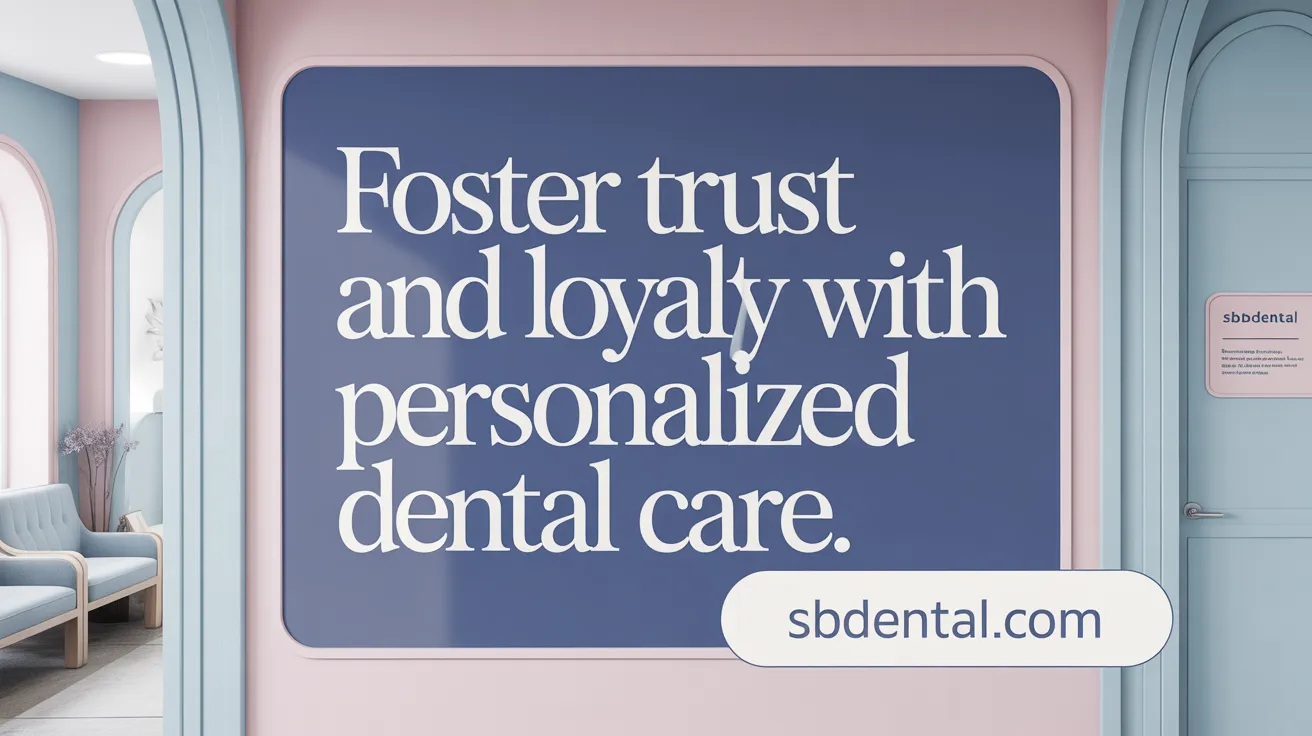Why Personalization Matters in Dentistry
Creating a personalized patient experience in dentistry is reshaping oral health care by focusing on the unique needs, preferences, and circumstances of each individual. This approach goes beyond routine treatment to build trust, improve clinical outcomes, and enhance patient satisfaction. By integrating advanced technology, effective communication, and patient-centered practices, dental providers can deliver care that respects patients as partners in their health journey.
Foundations of Patient-Centered Dental Care

What is patient-centered care in dentistry and why is it important?
Patient-centered care (PCC) in dentistry is an approach that treats each patient as a unique individual, considering their specific needs, preferences, and values. This type of care goes beyond traditional treatment by emphasizing empathy, respect, and dignity in every interaction. It aims to build a meaningful, trusting relationship between the dental professional and patient, which fosters comfort and reduces anxiety. For more insight, see Patient-centered care in dentistry.
Defining patient-centered care (PCC) in dentistry
PCC focuses on tailoring dental care to the whole person—not just the dental issues. It integrates understanding of the patient’s medical history, psychosocial context, and personal values into clinical decisions. The practice involves respecting cultural backgrounds and ensuring care is responsive to the individual’s lifestyle and health goals. Learn more about the definition of patient-centred care and patient-centered care in oral health.
Importance of empathy, respect, and dignity
Central to PCC is showing compassion and treating patients with dignity. This human touch helps patients feel valued and supported, improving their experience and willingness to engage in their care. Explore the principles of Compassion and dignity in dental care.
Shared decision-making and patient involvement
A key element of PCC is involving patients in decisions about their treatments. Dentists and patients collaborate to discuss options openly, aligning treatment plans with the patient’s goals and expectations. This shared decision-making builds trust and encourages patients to take responsibility for their oral health. See details about shared decisions in dental treatment and patient involvement in dental decisions.
Communication and transparency
Effective communication is essential for PCC. Dentists use clear, jargon-free language and provide complete information about procedures, risks, and benefits. Transparency ensures patients can make informed choices, feel more comfortable, and develop greater confidence in their dental care team. Refer to Effective dentist-patient communication and Role of communication in dental care.
By embedding these principles into daily practice, dental care providers can enhance patient satisfaction and improve overall oral health outcomes. Learn strategies for improving patient-centered dental care and enhancing patient experience in oral health care.
Creating Personalized Dental Treatment Plans

How are personalized dental treatment plans developed?
Personalized dental treatment plans begin with a comprehensive assessment of each patient's oral and medical history. Dentists evaluate current dental conditions such as cavities and gum disease, alongside considering medical factors like diabetes or heart disease which might affect treatment safety and choices. Lifestyle factors including smoking habits, diet, and teeth grinding patterns are also taken into account, as they influence both treatment planning and long-term oral health outcomes.
Considering aesthetic goals and lifestyle factors
Beyond health considerations, patients’ aesthetic desires such as teeth whitening or orthodontic preferences are incorporated into the care plan. A dentist will discuss these goals openly with the patient to ensure treatments align with their lifestyle, budget, and timelines. This holistic approach fosters better adherence and satisfaction, promoting long-lasting results. See Personalized dental care for more on integrating unique dental needs into treatment planning.
Addressing patient anxiety and preferences
Effective personalized plans also include strategies to reduce dental anxiety and increase patient comfort. This might involve selecting tailored anesthetic methods or sedation techniques and adjusting communication styles to build trust and understanding. Learn about managing dental anxiety and individualized patient care to enhance patient experience.
Role of technology and AI in tailoring care
Technology plays a significant role in modern personalized care. Advanced diagnostic tools like cone beam computed tomography (CBCT), intraoral cameras, and saliva or genetic analyses provide detailed insights into individual risk factors. Additionally, artificial intelligence (AI) systems analyze diagnostic images and patient records to enhance diagnostic accuracy and optimize personalized treatment strategies. These technologies enable dentists to develop plans that are precise, effective, and uniquely suited to each patient’s needs. For more details, explore AI transforming the experience of dentistry and advanced diagnostic technology in dental care.
Leveraging Technology to Enhance Personalization

What role does technology play in personalized dental care?
Technology is a cornerstone in advancing personalized dental care, enabling dentists to tailor treatments with precision and improve patient engagement.
Advanced diagnostic tools (CBCT, intraoral cameras)
Cone beam computed tomography (CBCT) provides detailed 3D imaging, allowing dentists to assess bone structures, tooth orientation, and pathology with exceptional accuracy. Intraoral cameras offer real-time visuals of patients' mouths, enhancing diagnosis and improving patient understanding of their conditions.
Artificial intelligence in image analysis and treatment planning
Artificial intelligence (AI) platforms analyze X-rays and diagnostic images to detect early signs of gum disease, cavities, and cancers. AI can also integrate patient data, history, and lifestyle factors to create customized treatment plans, improving diagnostic accuracy and outcomes.
Digital communication tools for patient engagement
Digital messaging, tele-dentistry consultations, and patient portals streamline communication, enabling personalized follow-up, education, and treatment reminders. These tools increase convenience and foster stronger dentist-patient relationships.
Use of saliva diagnostics and nanotechnology
Emerging saliva diagnostic technologies allow detection of systemic and oral diseases from saliva samples, providing a non-invasive method to tailor care. Nanotechnology is advancing implantable devices in the oral cavity for targeted drug delivery and health monitoring, promising highly individualized dental therapy in the near future.
Enhancing Patient Experience Through Communication and Feedback

How does communication influence personalized patient experience?
Effective communication is the foundation of a personalized dental experience. Dentists who use clear, simple language and active listening create an environment where patients feel understood and respected. Empathy and visual aids further help patients grasp complex information, reducing anxiety around treatments and encouraging informed decisions.
Effective dentist-patient communication strategies
Successful communication in dental care involves more than just words. Proper body language, eye contact, and gestures contribute to patient comfort and trust. Dentists should encourage questions and provide ample time during consultations to address concerns thoroughly. Tailoring communication styles to the individual patient's needs ensures clarity and fosters a positive relationship. Learn more about dentist-patient communication strategies.
Involving patients in shared decision-making
Shared decision-making empowers patients by involving them actively in their treatment planning. Dentists collaborate with patients to consider their preferences, lifestyle, and health goals, enhancing adherence and satisfaction. This approach respects patient autonomy while aligning clinical recommendations with individual values.
Use of patient satisfaction surveys for quality improvement
Patient satisfaction surveys are valuable tools for collecting feedback on the dental experience. Customized surveys that respect patients' time and are relevant to the visit type—such as new patient or routine check-up—yield high-quality responses. Regular analysis of survey results by staff highlights areas needing improvement, driving better service and patient care.
Encouraging patient reviews and feedback
Encouraging satisfied patients to share their positive experiences on social media and review platforms extends trust beyond the office. Such reviews provide social proof, enhancing the practice's reputation and helping attract new patients through word-of-mouth recommendations. See more on encouraging social media reviews.
By combining empathetic, clear communication with active patient involvement and systematic feedback collection, dental practices can significantly elevate the personalized patient experience, fostering trust, satisfaction, and long-term oral health outcomes.
Building Trust and Long-term Engagement with Personalized Care

How does personalized dental care build patient trust and adherence?
Personalized dental care builds strong patient trust by recognizing and responding to each individual’s unique needs, fears, and preferences. This individualized attention reassures patients that their concerns matter, which enhances confidence in their provider and fosters a collaborative relationship.
Patient education and preventive care
Educating patients about preventive measures tailored to their oral health status empowers them to take an active role in maintaining their dental health. Discussions about diet, hygiene techniques, and lifestyle factors are customized, helping patients understand how these influence their long-term well-being (ADA home oral care recommendations).
Addressing patient anxiety and comfort
Personalized dental care also addresses patient anxiety by selecting appropriate techniques and anesthetic options to improve comfort during procedures. A calming office atmosphere and empathetic, well-trained staff further ease patient fears, making visits more positive and encouraging regular attendance (Importance of communication in dental care, Benefits of patient-centered dental care).
Flexible treatment and financial planning
Tailored treatment plans take into account not only health goals but also patients' lifestyles and budgets. Flexible scheduling and financial arrangements reduce barriers to care, increasing treatment acceptance and adherence (Improving Patient Experience in Dental Offices).
Importance of staff training and welcoming environments
Staff trained in communication and empathy create a supportive environment where patients feel valued and understood. Welcoming spaces with thoughtful amenities contribute to patient satisfaction, making dental visits less intimidating and more engaging (Tips to Improve Patient Satisfaction at the Dentist).
Together, these elements of personalized care establish trust and promote sustained patient engagement, leading to better oral health outcomes and long-lasting dentist-patient relationships (Patient-centered care in dentistry).
The Future of Dentistry is Personal
Personalized patient experiences in dentistry transform care by placing individual needs, preferences, and values at the forefront. Through patient-centered principles, advanced technology, effective communication, and continuous feedback, dental practices can deliver more precise, comfortable, and satisfying treatments. This approach not only improves oral health outcomes but also strengthens trust and lifelong partnerships between patients and providers, shaping the future of dental care into a compassionate and tailored journey for every individual.
